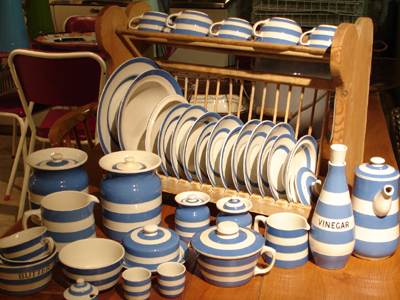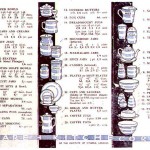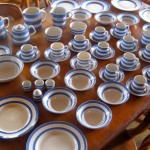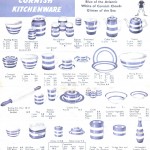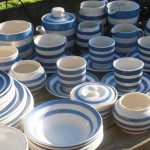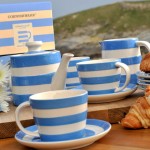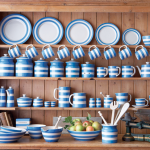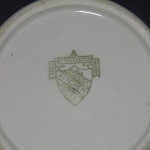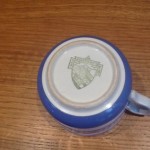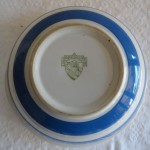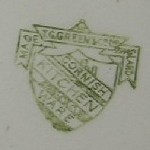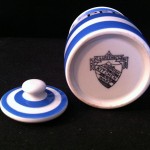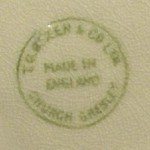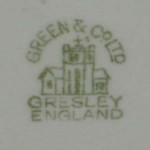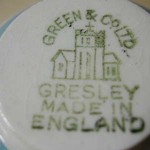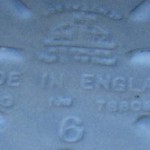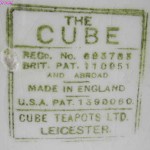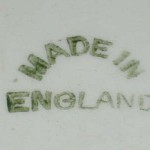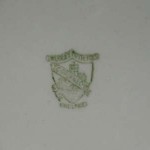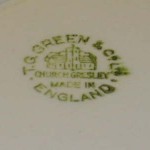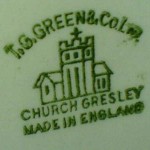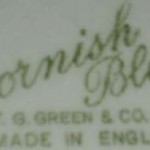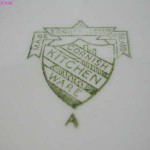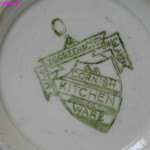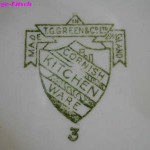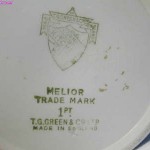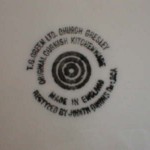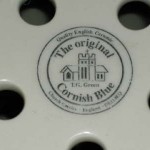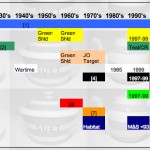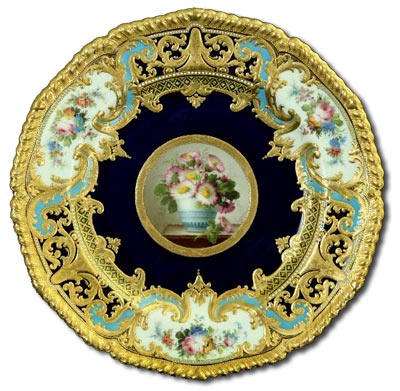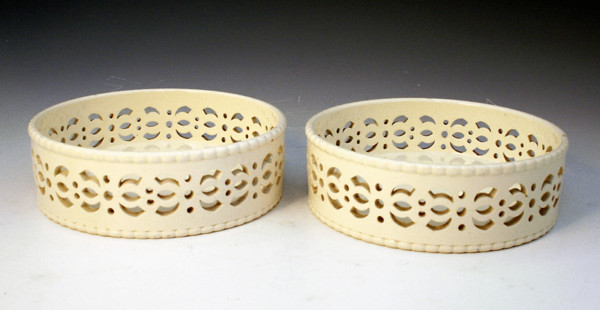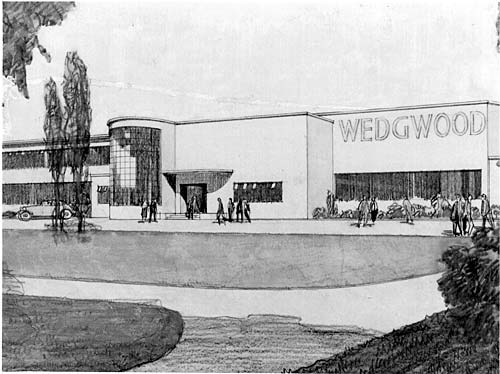The most famous of the ceramics associated with the county of Cornwall, Cornishware, also called Cornish Blue, has always been made in Derbyshire and has no connection at all with Cornwall apart from its name.
We’ve all seen the traditional Cornishware. Even if you aren’t a collector, you will recognize its typical, blue hoops on a white background said to represent the blue of the Cornish sea and the white of its clouds.
The company of T.G. Green is the maker and has been based in Church Gresley, Derbyshire since Thomas Goldwin Green bought the pottery in 1864. The company became very profitable producing kitchen and table wares. It remained in the hands of the family after Thomas G. Green’s death in 1905 and, despite a catastrophic fire, also continued to be successful until the 1950s and 60s when sales declined. It was bought by Cloverleaf in 1987 and is still part of that group.
In the mid 1920s Cornishware was introduced into the company’s range of products and quickly won its first Certificate of the Institute of Hygiene in 1928. It went on to win a Silver Seal from the Institute in 1935. It continued to win Institute awards for another thirty years. Perhaps the most notable result of winning the Institute’s first award was that the company started to promote Cornish Ware for the first time by emphasizing it in catalogues – something it had failed to do when the range was first introduced.
T.G. Green continued to produce Cornish Ware, with just a break during the Second World War. In the 1960s, Cornish Ware was redesigned by Judith Onions and her range has been produced until this year.
It’s very collectable especially the older pieces and although the company went into liquidation in 2009 it was bought from the receiver and continues to produce.
The different kinds of Cornish Ware that can be found are enormous. Of course, there are plates, mugs, cups, saucers, jugs and bowls. There are also rolling pins, clocks, toast racks and flour sifters. There are even tea cosies, tea towels and tablecloths made to match.
Because of its popularity, it became something of a style icon and has been used in advertising for other products like Homepride Flour, who use the distinctive blue and white stripes on their packaging, the Daily Mail, cocoa and even a poster for financial services. All of this gives collectors a chance to find ephemera associated with Cornish Blue.
Some collectors of Cornish Ware concentrate on particular types, for example, just the pieces with names of household products on them. You can find containers with the words Flour, Baking Powder, Milk, Oil, amongst many others.
The beauty for collectors is that some of these were made to order for particular retailers so there are very rare and so more valuable examples. These include include Fish Dripping, Apricots, and Borax.
Dating Cornishware
 Dating is not as straightforward as it is with most other kinds of pottery. Usually backstamps are a good guide but the company didn’t use these in a strictly chronological order, in fact they used more than one during the same periods. This changed when the Judith Onions’ designs were introduced in the 1960s so these can be identified by their backstamps. Although the shapes and positioning of the blue stripes can be an indicator of period, they are not reliable as pieces were made for many years, overlapping with newer designs.
Dating is not as straightforward as it is with most other kinds of pottery. Usually backstamps are a good guide but the company didn’t use these in a strictly chronological order, in fact they used more than one during the same periods. This changed when the Judith Onions’ designs were introduced in the 1960s so these can be identified by their backstamps. Although the shapes and positioning of the blue stripes can be an indicator of period, they are not reliable as pieces were made for many years, overlapping with newer designs.
Cornishware Pottery Marks

